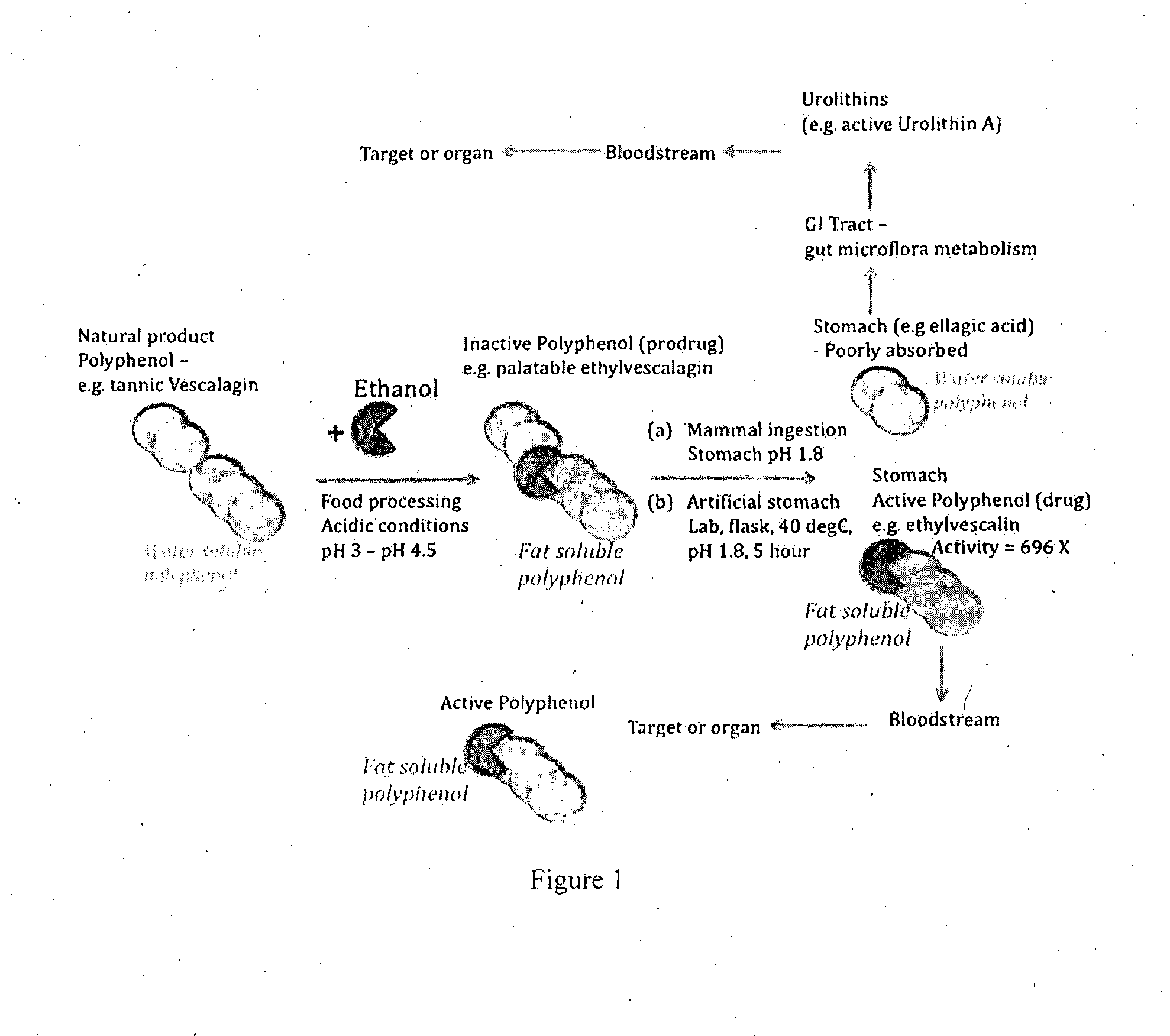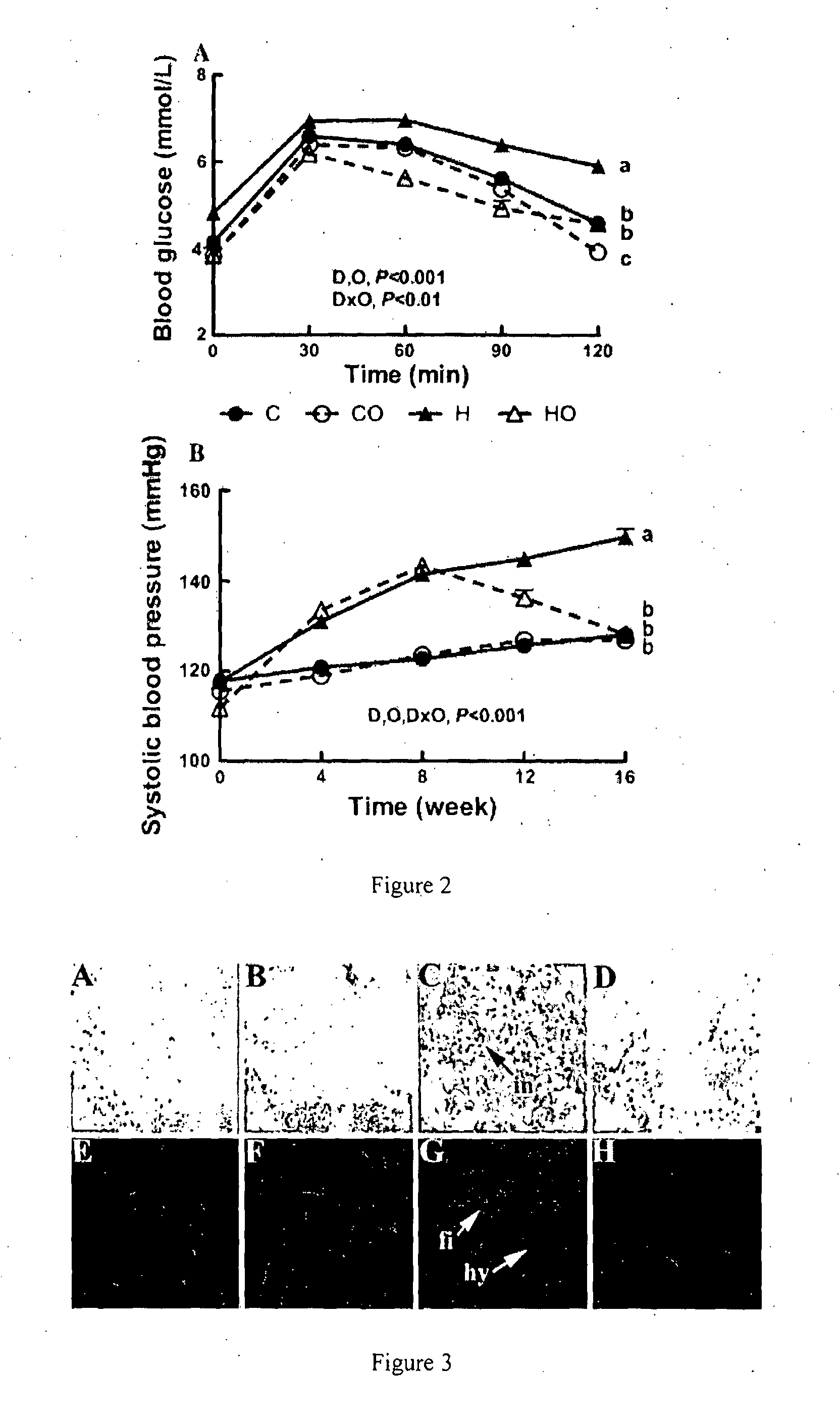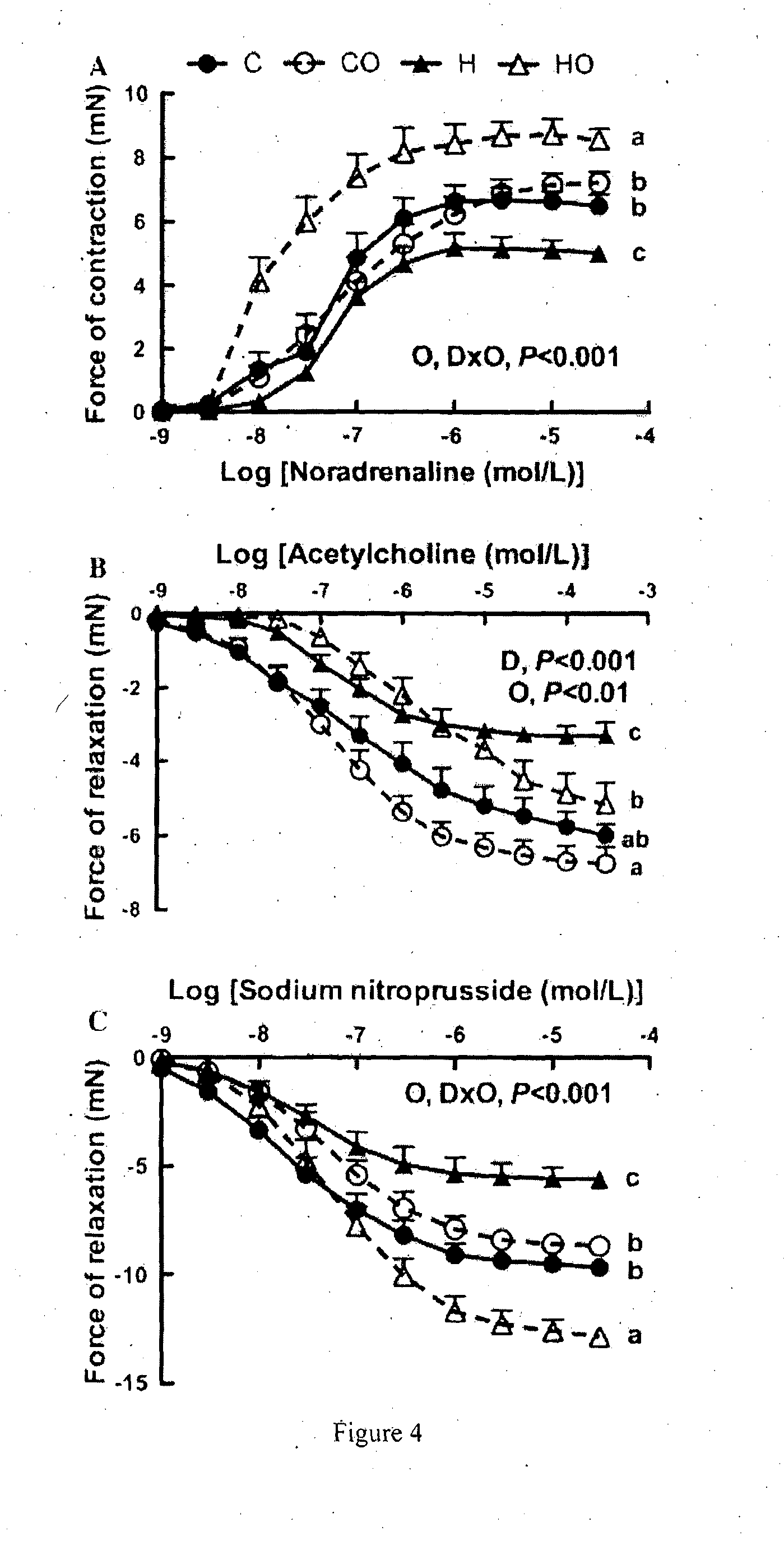Modified polyphenols and modified polyphenol compositions
a technology of modified polyphenols and compositions, applied in the field of polyphenolic compounds, can solve the problems of ineffectiveness, inability to meet the needs of patients, etc., and achieve the effect of essentially fruitless search in the natural world for competition to potent pharmaceuticals for disease treatment and prevention
- Summary
- Abstract
- Description
- Claims
- Application Information
AI Technical Summary
Benefits of technology
Problems solved by technology
Method used
Image
Examples
example 1
EVC Successfully Treats and Prevents Metabolic Syndrome
[0310]This example describes the preparation of ethoxylated vescalagin / castalagin rich extract (EVC) and use of the extract in the treatment and prevention of metabolic syndrome.
[0311]Materials and Methods
[0312]Ethoxylated Vescalagin / Castalagin Rich Extract (EVC)
[0313]European oak wood (Querces petraea Liebl) was converted into chips (1 kg) and extracted for 6 months at room temperature in grape brandy (4 kg, pH 3:5, containing 62% v / v alcohol). The resultant alcoholic extract was filtered to remove the solid Material and de-alcoholised in a vacuum distiller to 25% of its original volume. The resultant extract is an ethoxylated vescalagin / castalagin rich extract, named EVC. The resultant de-alcoholised extract (1 kg) was derived from 1 kg oak chips, and is thus designated EVC 1:1.
[0314]The EVC was analysed by liquid chromatography / mass spectrometry (LC / MS) employing electrospray mass spectrometry and ultraviolet detection. The a...
example 2
Low Dose EVC Superior to High Dose Ellagic Acid in Treatment and Prevention of Metabolic Syndrome
[0378]A study by Panchal et al., (Panchal S K et al. (2012)), investigating the effect of ellagic acid on high-carbohydrate, high-fat diet-induced metabolic syndrome in rats found that ellagic acid improved hepatic and cardiovascular structure and function, and normalized metabolic parameters such as glucose tolerance, blood lipid components, central obesity and physiological parameters such as body weight.
[0379]In addition, there was a reduction in abdominal fat deposition without any change in whole-body fat, indicative of the lipid redistribution seen following consumption of α-linolenic acid-rich chia seeds. In the rats with metabolic syndrome, the redistribution of fat was accompanied by a reduction in blood lipid components, hepatic steatosis and increased fatty acid oxidation. There was also observed an attenuation of oxidative stress and inflammation in the heart and liver.
[0380]...
example 3
EVC / Non-Ethoxylated Ground Coffee Combination Successfully Treats and Prevents Metabolic Syndrome
[0384]This example describes the results of a rat diet supplemented′ with (a) non-ethoxylated ground arabica coffee and (b) ethoxylated vescalagin / castalagin rich extract (EVC) and non-ethoxylated ground arabica coffee. The diets were fed to rats having high-carbohydrate, high-fat diet-induced metabolic syndrome.
[0385]The EVC was prepared as described in Example 1. Data for various health outcomes are presented in Table 7.
TABLE 7HCHF (highCSfat, highHCHF +(cornstarchcarbohydrateHCHF +coffee / Healthdiet)diet)coffeeEVCOutcomesN = 8N = 10N = 10N = 9SBP*120.7 ± 2.4143.7 ± 3.8137.7 ± 1.5142.6 ± 2.8(8 weeks)(in mmHg)SBP (12 week)123.5 ± 1.1148.2 ± 3.4132.9 ± 1.3128.7 ± 3.1(mmHg)SBP128.4 ± 1.3152.8 ± 4.8126.5 ± 2.1121.7 ± 2.6(16 weeks)(mmHg)Fasting blood 3.9 ± 0.2 4.7 ± 0.3 4.3 ± 0.1 4.1 ± 0.1glucose (16weeks) (mM)Waist 19.1 ± 0.7 23.2 ± 0.4 24.1 ± 0.8 21.9 ± 0.3circumference(cm)Abdominal fat 39...
PUM
| Property | Measurement | Unit |
|---|---|---|
| pH | aaaaa | aaaaa |
| pH | aaaaa | aaaaa |
| pH | aaaaa | aaaaa |
Abstract
Description
Claims
Application Information
 Login to View More
Login to View More - R&D
- Intellectual Property
- Life Sciences
- Materials
- Tech Scout
- Unparalleled Data Quality
- Higher Quality Content
- 60% Fewer Hallucinations
Browse by: Latest US Patents, China's latest patents, Technical Efficacy Thesaurus, Application Domain, Technology Topic, Popular Technical Reports.
© 2025 PatSnap. All rights reserved.Legal|Privacy policy|Modern Slavery Act Transparency Statement|Sitemap|About US| Contact US: help@patsnap.com



